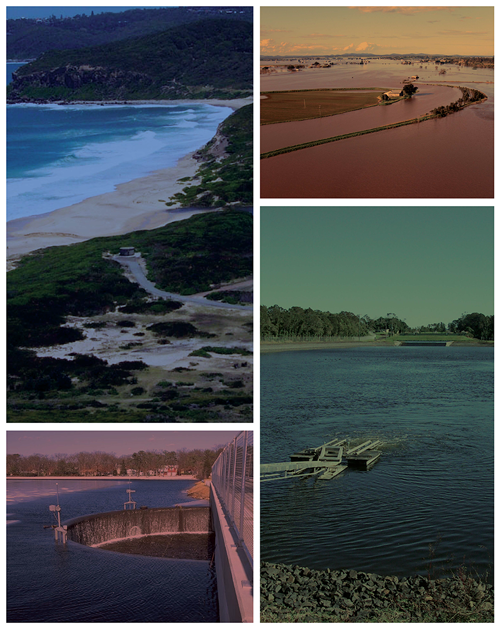The Sydney Division, Engineers Australia Water Engineering Panel will be hosting a session on Student Honours Thesis Presentation. We are proud to have Dan Morgan and Zhe Liu to present their Honours Thesis in the field of water engineering.
Dan Morgan – Application of Soil Water Balance Model (SWMOD) to Gauged Catchments in NSW
SWMOD is a distributed storage capacity loss model and was developed in 1989 by the Water Authority of Western Australia. It is an established method of rainfall loss estimation in south western WA. It is also theoretically possible to characterise this type of model anywhere in Australia using national soil maps. Today this type of model has extremely limited use in NSW and its suitability remains unknown. This project will test SWMOD on several NSW gauged catchments where the conventional Initial Loss Continuing Loss (ILCL) model has been applied. The selected catchments will include some where the traditional ILCL model performed well and some where it has proved problematic.
The flood hydrographs from each catchment that result from the use of the SWMOD will be compared with the existing flood hydrographs for each catchment and the hydrographs that have resulted from the use of the ILCL model.
Zhe Liu – A New Method for Verification of Delineated Channel Networks
Several methods are used to delineate channel networks. The most widely used are the contributing area method, area–slope method, and grid network ordering method. The number of delineated channels depends on the threshold adopted when using each method. However, the appropriate threshold value required to delineate channel networks, and their corresponding accuracies, are still uncertain.
The consistency between the delineated channels and actual channels can be evaluated by carrying out extensive field surveys, but these require significant time and cost. Accurate knowledge of delineated channel networks is vital, and is achievable more efficiently and simply. A new method of calculating the accuracy of delineated channel networks is introduced in this study. Channel cross-section profiles throughout the channel network were examined and three new incision indices were derived: an incised channel index, a partially incised channel index, and a non-incised channel index. The indices were found useful for setting appropriate threshold values for actual channel networks.
The presentation will be held at the Aerial Function Centre, UTS , on Wednesday, 30th April 2014, with light refreshments from 5.30pm for a 6.00pm start. RSVP is requested via the EA booking system.
A full PDF flyer is given in the link below.
Flyer Link: Water Panel Seminar – Student Thesis Presentation Apr2014



Leave a Reply